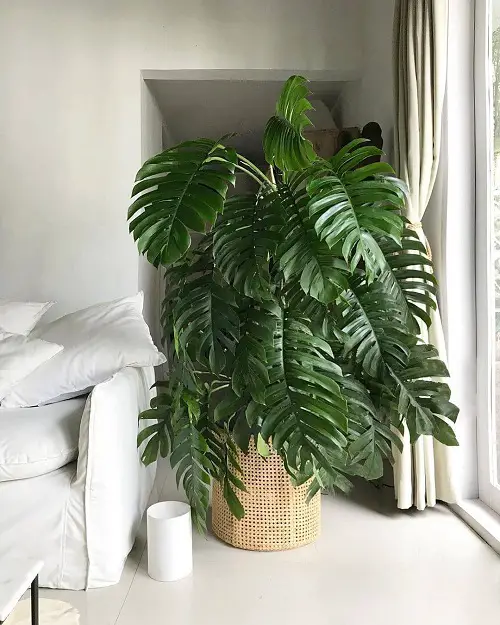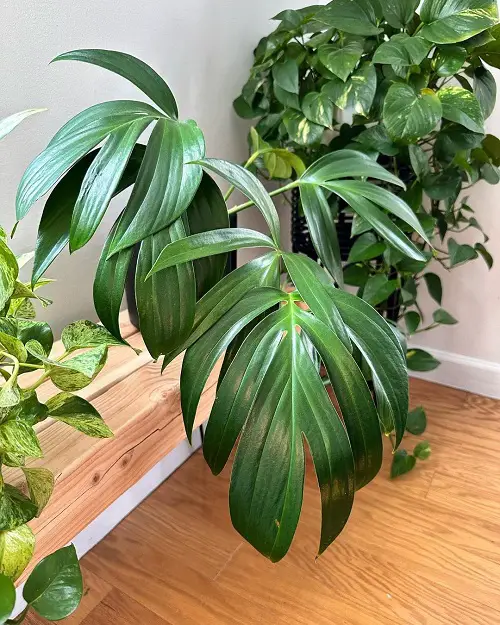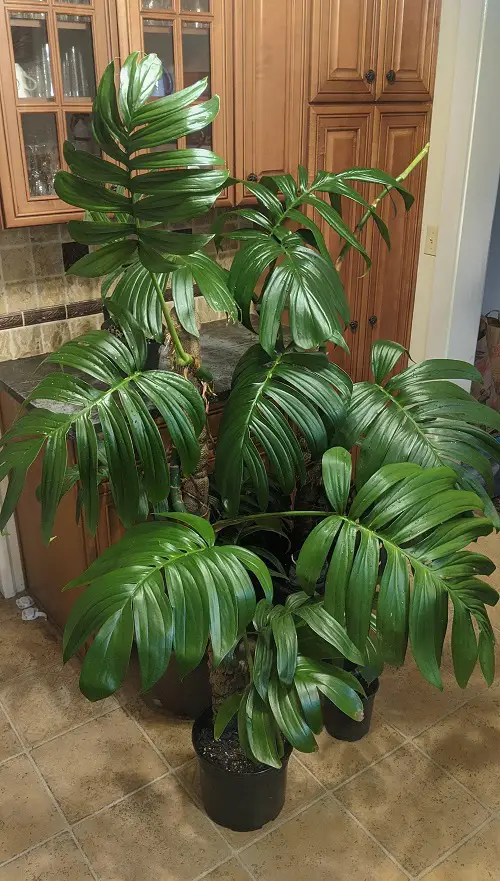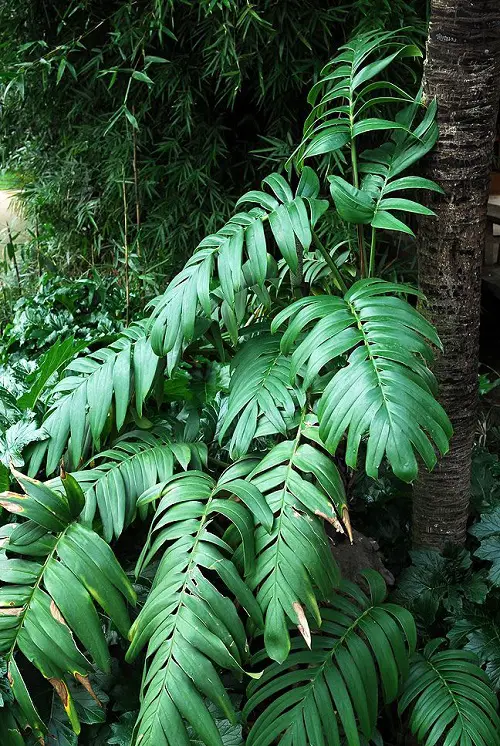Learn How to Grow Rhaphidophora decursiva, a beautiful tropical plant with proper lighting, watering, and humidity.

Don’t know the first thing about Rhaphidophora decursiva? We’ve got you covered with everything you need.
USDA Zones: 9-11
Other Names: Dragon’s tail plant, creeping philodendron, Monstera decursiva
Look here at Best Rhaphidophora Types
Rhaphidophora decursiva Plant Information
The Climbing philodendron, or Rhaphidophora decursiva, is part of the Araceae family and comes from Asia.
It has beautifully large, dark leaves that develop gorgeous fenestrations upon maturity, taking their beauty to another level. This plant can reach up to 10 feet tall indoors and up to 60 feet outdoors.
The plant’s vigorous climbing habit makes it a must-have addition to your home. Also, eating the plant can lead to toxicity to humans and pets.
Propagating Rhaphidophora decursiva
You can easily propagate Climbing philodendrons from seeds and cuttings. If you ask us, go with the cuttings. The seeds take a bit longer to grow, and you can’t be sure of the variety. This can be done in spring or summer by following the below-mentioned steps:
- Look for a healthy, mature plant and cut one or more stem cuttings from it using clean pruning shears.
- Make sure each stem cutting contains at least three or four nodes.
- Remove the leaves, and keep only one or two leaves at the top of your cutting.
- Now, place it in a container filled with water so that nodes are submerged in water and leaves at the top remain above the water.
- Wait (one or two weeks) until the roots develop at least one inch long, then transfer the plant from water to a small pot with well-draining soil and good drainage.
- Water it well (keep the soil moist) for one to two weeks, and later, allow the soil to dry out between waterings.
Best Pot Size for Rhaphidophora decursiva
Don’t get a pot that’s too large, but don’t go for a small one where the plant’s roots will be congested. Start with a 10 to 12-inch pot, which will be good for a few years. After that, get a slightly bigger one. And repot it in spring or summer only as the plant grows actively during this time.
Requirements for Growing Rhaphidophora decursiva
Sunlight
Rhaphidophora decursivas need bright but indirect light, so it should be near a window with filtered sunlight, not direct sunlight. If you keep it in bright sunlight, the leaves will be scorched.
You can also use grow light for this if you are growing it in an area without natural light.
Soil
This plant needs potting soils that can retain some moisture but don’t become waterlogged. A soil mixture containing equal parts of orchid bark and perlite will be perfect.
Water
Aim for deep watering, but don’t keep it waterlogged. Let the soil dry out and water it only when the top inch feels dry to the touch.
Don’t overwater the plant, as the roots will start to rot. These plants need a bit more water during summer but don’t follow the same in winter. They’ll need less watering in the colder months.
Temperature and Humidity
Just like other philodendrons, these climbing ones need slightly warm temperatures to stay healthy, which is 65-85°F (18-26°C). They also need higher humidity, so you should keep a humidifier nearby or in a place where it receives it naturally, like in the kitchen, laundry room, or bathroom.
Rhaphidophora decursiva Care

Fertilizer
Rhaphidophora decursiva needs a balanced, liquid- fertilizer during the growing season (spring and summer). You should feed the plant once a month.
Don’t fertilize the plant when it’s dormant in fall or winter.
Pruning
A little bit of pruning can help you maintain your Rhaphidophora decursiva aesthetic appeal. If it becomes too large or leggy, snip back the longer stems. Otherwise, cut off the yellow or damaged leaves. That’s enough! Spring or summer will be a good time for this!
Pests and Diseases
These plants resist pests, but sometimes spider mites and mealybugs infect them. But they are nothing to worry about. A little bit of insecticidal soap or neem oil spray can get rid of them.
Not many diseases affect these plants, but pay attention to your watering routine, as too much of it can lead to root rot.




